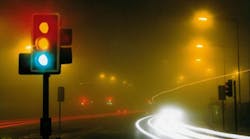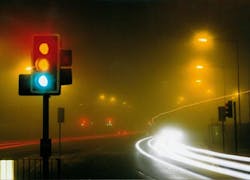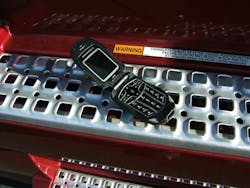And wouldn’t you know it: distractions while driving is the leading cause for some 12% of red light intersection infractions, according to data analyzed by the National Coalition for Safer Roads (NCSR) and FocusDriven.
The two groups recently joined forces on a recently released study that examined 118 intersections monitored by red light cameras scattered across 19 different communities for 3 months. Their research found that out of the 5,803 red light volitions that occurred at those intersections over those 90 days, some 704 or 12% were directly caused by driver distraction.
Specifically, of that 12%: 39.3% were using cell phones while driving; 43.2% were ‘looking away’ when approaching the traffic signal; and 17.5% were eating, drinking, smoking, reading, putting on makeup, etc., when they ran the red light.
From those sample findings, the two groups estimate that over 7.3 million intersection violations that occurred across the U.S. in 2012 can be attributed to distracted driving.
As a result, NCSR President Melissa Wandall characterized distracted driving as a “pervasive threat” on U.S. roadways, particularly when it comes to cell phone use while driving.
She noted that according to the National Safety Council, cell phone use is a factor in 21% of crashes, and drivers talking on handheld or hands-free cell phones are four times more likely to be involved in a car crash.Thus it is perhaps not surprising that NCSR’s and FocusDriven’s study determined that there is what they term a “close connection” between distracted driving and red-light running – a traffic light violation that’s the leading cause of urban crashes, according to data crunched by the Insurance Institute for Highway Safety.
The analysis by NCSR and FocusDriven also looked at the effect of distracted driving legislation on intersection violations by comparing the communities in the sample with strict cell phone bans in place with communities that have either more lenient or no laws against cell phone use while driving.
The groups found that less than 10% of red-light violations involved distracted driving in communities that have strict laws against cell phone use, compared to more than 16% in communities that do not; a finding that suggests that strict cell phone bans reduce the risk of distracted driving by nearly 7%.
Yet there is still debate over whether such anti “distraction while driving” laws really reduce such behavior by motor vehicle operators, as this study conducted several years ago discovered.
It also goes without saying that a huge chunk of red light violations – some 78% – don’t involve distractive driving at all, according to what NCSR and FocusDriven uncovered.
Thus changing such willful driving behavior may prove a hard nut to crack, especially since eliminating distractive behaviors behind the wheel is proving none-too-easy as well.





